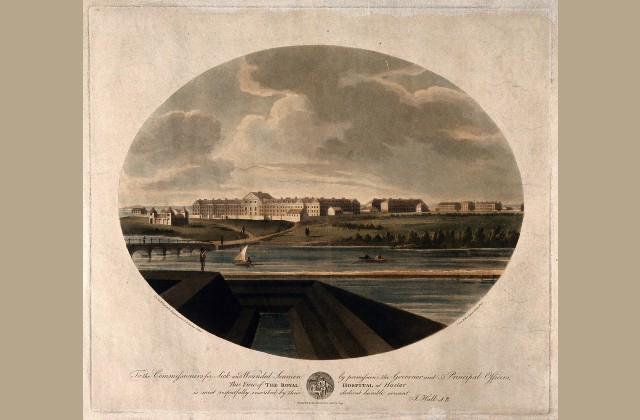I watched a quiz show recently, where contestants were trying to guess a historical figure. All the clues pointed to a nurse who was at Crimea. Everyone guessed Florence Nightingale, but they’d missed a crucial clue, a reference to Kingston, Jamaica. The figure was, of course, Mary Seacole.
While there’s no doubt that Florence Nightingale is one of the most important and influential figures in nursing, this does remind us yet again that we’re in danger of forgetting many other nurses and midwives who have shaped our profession.
Do we do them a disservice, dismissing them as not being ‘real’ nurses because they practiced before Florence?
The focus on Florence Nightingale in 2020, the year of her 200th birthday and the International Year of the Nurse and Midwife, irritated some.
Nursing Clio, an academic blog community sharing feminist histories of health and medicine, published a series of articles in response, under the title . They argued that there is an important history of nursing before and after Florence Nightingale, which should be given more recognition.
Our work in the RCN History of Nursing Forum often focuses on RCN members and their legacy, who all came after Nightingale.
I often ask myself: what about those who came before Florence? Do we do them a disservice, almost unconsciously dismissing them as not being ‘real’ nurses because they practiced before Florence Nightingale’s time?
Ancient nursing schools
Nursing has been an important role for a long time – we can go right back to ancient times to see that. The first documented opening of a school of nursing was in 250BC, in India, open only to men.
In the third century BC, hospitals were set up in villages in India. Ancient texts show how nurses were crucial in staffing these, and should demonstrate “good behaviour, distinguished for purity or cleanliness of habits.” They should also be “attached to the person for whose service they are engaged, possessed of cleverness and skill, endued with kindness, skilled in every service that a patient may require”.
These early nurses also had a wide range of skills, including being “competent to cook food and curries, clever in bathing or washing a patient, well conversant in rubbing or pressing the limbs, or raising the patient or assisting him in walking or moving about, well-skilled in making or cleaning beds, competent to pound drugs, or ready, patient, and skilful in waiting upon one that is ailing.”
It’s interesting that they were also expected to do “any act they may be commanded (by the physician or patient) to do.”
The Red Cross
However, it’s not until much later that we learn about individuals involved in nursing care. One such nurse was St Camillus de Lellis, who practised in the late 16th century. He had been a soldier and an excessive gambler prior to joining the priesthood aged 25.
Born in Italy in 1550, he received a leg wound during battle that never healed and plagued him throughout his life. He began nursing others, working to improve the care of the sick in the San Giacomo Hospital in Rome, and went on to establish a group of nurses to assist soldiers on the battlefield.

They wore a large red cross on their cassocks – the origin of the Red Cross movement, now a symbol of charity and service.
St Camillus de Lellis also led the care of Rome’s victims of the bubonic plague and became concerned with care of those at the end of life.
He introduced the practice of waiting fifteen minutes past the moment when the patient appeared to have breathed their last to avoid people being buried alive and is credited with saving many people through this intervention.
Public health
Rufaidah bint Sa-ad (also known as Rufaida Al-Aslamia and Rufayda al-Aslamiyyah) has been recognised as the first female Muslim nurse. Born around 620 CE the daughter of a physician, through assisting him she learned about patient care.
Once the Islamic state was established in Medina, Rufaidah set up a hospital tent outside the Prophet’s mosque.
During wars she led groups of volunteer nurses, women she’d trained herself, to treat casualties on the battlefield, and is said to have set up a community outreach service to look at how social problems lead to health problems. Was she the first public health nurse?
Historical contributions
Rufaidah bint Sa-ad and St Camillus de Lellis are just two of many individuals who contributed to the care of sick and injured people, and created systems to address health problems in their communities.
The history of nursing is affected by shifts in attitude to illness, injury and who is responsible for the care of those in need
The history of nursing is affected by historical shifts in attitude to illness, injury and who is responsible for the care of those in need.
While we’re limited by the evidence and records of ancient and medieval times, it’s still worth considering the contributions of our fellow nurses (even if they went by other names) throughout history.
As we already do with more recent and familiar nursing figures, like Nightingale, we should take the time to remember them too.
Find out more
Read about the History of Nursing Forum and how to join.
If you want to read more about ancient nursing schools, Rufaidah bint Sa-ad and St Camillus, Tamsin recommends the following history articles:
- ÃÛÌÒÖ±²¥˜Women in Islamic Civilisation: Their Rights and ContributionsÃÛÌÒÖ±²¥™ by E Akhmetova in the ICR Journal, 2016
- ÃÛÌÒÖ±²¥˜Men in nursing: The early yearsÃÛÌÒÖ±²¥™ by M Christensen in the Journal of Nursing Education and Practice, 2017
- ÃÛÌÒÖ±²¥˜Camillus de Lellis (1550 ÃÛÌÒÖ±²¥“ 1614), Patron Saint of HospitalsÃÛÌÒÖ±²¥™ by JP Donnelly in the The Linacre Quarterly, 2011.
Members can search and access e-journals through our Library and Archive Service.








